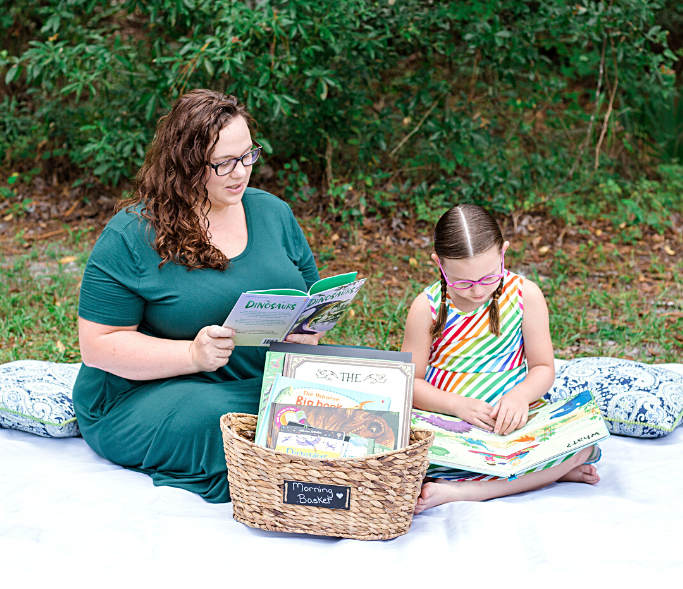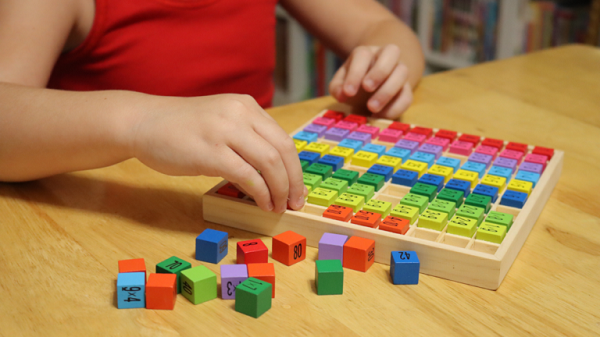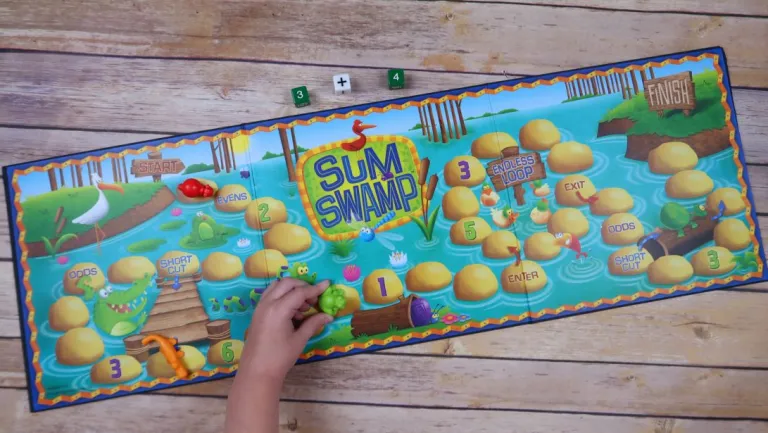This post contains affiliate links. Thank you for supporting the Homeschool Compass by shopping through our page!
Jessica Waldock is a writer, photographer, and homeschool mom of one living in sunny Florida. She founded the Waldock Way as a way to give back to the homeschool community that she loves so much. There Jessica shares tips, tricks, inspiration, and unique resources that help ignite a love of learning in children that will last a lifetime. She inspires families to engage in homeschooling as a lifestyle where relationship comes first and interest-led learning prevails.
You can listen to my conversation with Jessica here. And be sure to check our other interviews with amazing guests like Sally Clarkson, Leslie Martino, and Durenda Wilson!

Follow the Homeschool Compass Podcast on Apple Podcasts, Spotify, or wherever you get your podcasts so you never miss an episode.
If you prefer to read your content rather than listen, check out these detailed show notes with time stamps to the podcast audio.
Jessica’s homeschool story (1:50)
Jessica never intended to homeschool. Her nine-year-old Emily is her rainbow baby. Jessica and her husband didn’t think they could have children, and then Jessica had a horrible pregnancy. When it came time to send Emily to school, Jessica didn’t want to let her go. She explains, “When preschool rolled around I just used the excuse that it was only a few hours a day, we lived so far away, I could just teach ABCs and 123s. I mean, anybody could! So we kept her home.”
As the school year went on, Jessica, her husband, Kevin, and Emily all fell in love with the homeschool lifestyle.
At that time we said, we would reevaluate every year. We would all sit down as a family and decide if it’s something we wanted to keep doing. I am here to tell you, we have yet to do that because it just fits so well. We just keep doing it!
How would you describe your homeschool approach? (3:45)

“We are lifestyle learners. Everything we do is part of our routine, and it’s part of our life. It’s kind of why we school year round. We never really stop.”
If she had to pick one of the more traditional categories, the Unit Study Approach probably fits Jessica’s homeschool best: “A lot of what we do is thematic, we really like tying as much as we can to those themes, so if I had to choose we’re unit study homeschoolers.”
Would you like to learn more about the different styles of homeschooling and find the one that suits your family best? Take our quiz!
Jessica goes on to say, “We really like living books, we like getting outside in nature. We love games! We do morning basket. So probably eclectic fits us best.”
What does your daily rhythm look like? (4:30)
No two homeschool days ever look exactly alike, but Jessica’s days do have a certain flow that works best for her family.
- Morning Basket
- Table Time
- Lunch: Jessica and Emily do lunch separately. “After that we have a lunch that is separate. I need that 20 or 30 minutes turn on podcasts, turn on audiobooks, turn on an educational show, and eat kind of separately. That is our alone time to recharge for the rest of the day.”
- Afternoon Activity: “That could look like a movie night, it could be us cooking dinner together, it could be a poetry teatime, playing in the pool. During the more structured part of our school year that may be a bigger project like a subscription box or an arts and crafts project.”
- Dinner and a more relaxed end of the day
Jessica and her family are night owls, so they embrace a later start to the day. “We all prefer to go to bed around midnight to 2 am and we’ll sleep until 10 or 11 preferably, and we’ll start later in the day. And homeschooling affords us the flexibility to do it.”
Homeschooling an Only

What are some of the reasons we might find ourselves homeschooling an only, whether we have one child or many? (7:39)
When Jessica first began speaking out about homeschooling an only, she noticed many parents were reluctant to think of themselves that way because they weren’t the parent of an only child. But homeschooling an only takes many forms.
- Maybe all your other kids go to traditional school, and you’re only homeschooling one of your children.
- Maybe you have a large age gap between children, and your older children are graduated so you just have one left at home.
- Sometimes an aunt, or uncle, or grandparent is homeschooling a child for another family member.
In all of those scenarios, you’re homeschooling an only, and the dynamic is different than if you’re homeschooling multiple children.
What do you love about homeschooling an only, and what are some of the challenges that come along with that? (9:13)
Interest-led learning
With one child, Jessica can tailor everything in her homeschool to Emily and what she’s interested in on any given day.
Connection
The quality of connection between a homeschool parent and an only can be a great benefit. Jessica shares, “The relationship that you’re building when it’s just you and one child is phenomenal.“
At the same time, that leads to one of the biggest challenges of homeschooling an only.
It’s just the two of you.
“On the days when things aren’t so picture perfect, there’s no buffer. There is no other child to distract you. It’s just you and the other kid sitting at the table, maybe butting heads.”
If one of you is having a bad day, essentially both of you are having a bad day.
Mental exhaustion
The mental exhaustion of homeschooling an only does take a toll. Jessica elaborates: “What I imagine is that a homeschool mom of many would be physically tired by the end of the day. I’m normally not, but as a homeschool mom of one I am mentally exhausted because I am her everything. Her playmate, her only person for her to talk to, the person she needs to have imaginative play with. I’m everything, so she is talking to me or engaging with me from the time her eyes open till the time they close at the end of the evening.”
How do you encourage independence in schoolwork and playtime? (12:17)

Here are some of the strategies Jessica uses to foster independence in school work:
- Sitting at the table with Emily, but doing her own work or projects
- Setting Emily up with something and then going to change the laundry or load the dishwasher (something where Jessica is still available, but not directly engaged). Over time you can gradually extend that time of stepping away.
Strewing is the main way Jessica has fostered independence in play. Strewing means leaving interesting items around your home for your child to discover and engage with. You might strew a puzzle, a single player game, a book, Legos. Strewing allows Jessica to see how Emily engages with different materials and what creative ideas she comes up with. It also buys Jessica some time to wake up slowly and peacefully in the morning. As Emily has gotten older, that time has gradually lengthened from 10 – 15 minutes to 30 – 45 minutes.
Where do you find strewing ideas?
- Jessica uses the hashtag #strewingforthewin on Instagram to discover new strewing ideas
- Colleen Kessler offers a free Strew to Learn email course where you’ll get one email a day for five days filled with strewing ideas and suggestions for implementing strewing in your homeschool
- Leah McDermott of Your Natural Learner shares great strewing ideas under the hashtag #morninginvitations (my favorite was this one where you supply your children with a pineapple and a bunch of rubber bands and invite them to discover how many rubber bands it takes to break the pineapple in half!)
Can I really homeschool with just one child? How do you hold discussions so your child hears multiple perspectives? (16:22)
Jessica made it very clear that the benefits you are giving your child by homeschooling far outweigh any downsides to doing homeschool with just one child.
You are giving them so much more by homeschooling them and basically giving them all of everything they could ever want as far as an education, and the relationship, and the connections, and the ability to learn how to be a lifelong learner and follow their own interests – I just think the advantages far outweigh the disadvantages.
Jessica exposes her child to varying opinions by talking to varying people: her dad, her grandparents, her aunts and uncles, people they encounter in everyday life. Emily also interacts with other children through online classes that allow discussion. Jessica recommends Outschool for their virtual live classes. Co-ops, field trips, and being around other people in general are also ways to get this kind of interaction for your child.
How do you manage conflict as you’re homeschooling an only? What do you do on the days where nothing is going right? (20:13)
If the homeschool day is going off the rails, Jessica has a series of steps she goes through to try to turn the day around:
- See if there are physical needs that can be addressed:
- “Is one of us sick? Did one of us not get enough sleep? Is one of us hangry? And then address those things. If one of us didn’t get enough sleep, let’s pause for a nap. If we’re hangry, let’s get some food in us.“
- Try a read aloud. Jessica will grab a book and read while Emily does whatever makes her happy whether that’s playing with Legos, doing a puzzle, sitting quietly, eating a snack, etc.
- Pull out a game, especially one that’s more light-hearted and playful. Cartoon It, Sculpt It, and Hedbanz are a few that Jessica turns to in moments like this.
- Try a different location. Take school outside, or take it to the library.
Sometimes even that isn’t enough to turn the day around. Jessica says,
If none of those things have worked (trying a book, trying a game, trying a different location), and we’re still butting heads, we call it quits for the day. We go our separate ways. I turn on a TV show or video, I put earbuds in my ears. Whatever it takes at that point to survive.
For me, our priority in homeschooling is to instill a love of learning while prioritizing relationships and connection with each other, so I don’t want to sacrifice the relationship and connection just to try to force her to learn. I have absolutely no problem going full foot on the brake, and saying that’s it for today, because I don’t want to sacrifice our relationship.
If we try to push forward with schoolwork in a situation like this, Jessica advises, the results are never worth it. It’s far better to take a break, and pick back up with it the next day:
“Whatever you do get out of them, it’s not going to be quality. They’re probably not going to remember it. They’re just going to be frustrated. It’s just not worth it.
We’re homeschoolers. We have the freedom to school 24 hours a day and 365 days a year so we don’t even really have to worry about playing catch up or getting behind. It’s ok to just take the day off.
And there are sometimes when I can tell before even going through those steps that it’s one of those days none of those steps is going to work. We just need to call it before we start it. If we wake up and the first twenty or thirty minutes everything seems to be rubbing the other one the wrong way, I’ll be quick to say, ‘I think it’s a movie day in bed and pajamas!’ and try to save it before it goes off the rail.
Gameschooling
What are some favorite games you’ve been playing lately? (24:56)
“When we do family game night, we always bring one game each to the table. It ensures that by the end of the night everybody’s happy because we’ve all got to play our favorite game.”
Here are some favorites that get chosen again and again at Jessica’s house:
How has gameschooling benefited your homeschool? (26:59)

Jessica didn’t always view games as real learning. Here’s the moment that brought the benefit of gameschooling home to her:
“When Emily was in kindergarten, we were working on addition math facts. She was having trouble with it. I was a full time college student, finals were coming up. It was Thanksgiving time, and all of the holiday pressure and stress was hitting us, and I was in tears one day when Kevin came home from work.
He said, ‘I really think you should just pause homeschooling for the holidays.’ (In fact, we now do that every year because it was so successful.) ‘You’ve got finals which you can’t change. We obviously can’t move the holidays. But you can just take a break from homeschooling, she’s in kindergarten, it’s not the end of the world, and you have all summer.’
So we did just that. We did not do anything educational, I thought. But over the holidays Kevin decided to teach Emily how to play Yahtzee because it’s his favorite game. She loved it of course because what five-year-old doesn’t want to throw five dice across the table. At that point we were doing the majority of her scorekeeping for her and writing the numbers down. We were modifying it and helping her some.
When we officially came back to school in January, all the sudden this child who had struggled for months to remember that 1 + 1 = 2 knew math facts that we hadn’t even reached yet. I was like, ‘How on earth does she know that 5 + 5 + 5 = 15 when I haven’t even taught her that 5 + 2 = 7 yet?!’ And it dawned on me. It was from Yahtzee. It was from rolling those dice and adding up the numbers and hearing us do it and her attempting to do it on her own.
All of a sudden I found a gameschool group on Facebook, and it just became very clear to me that this was a thing, and that I could use games, which was something our family already loved anyway, to teach concepts in a way, especially if you have an only, that doesn’t feel as stressful.
Sometimes when you’re teaching just a single child, it’s just me and her, so it can feel anxiety-producing for her when I’m just staring at her waiting for her to answer me. A game doesn’t do that. The game doesn’t judge if you get the answer wrong, so it’s just a fun, low-key way to do some of the exact same things we would do with pencil and paper.
Summer Reading
What are some of your family’s favorite books to read-aloud over the summer? (32:03)
Jessica’s family has a summer tradition of reading books that have been made into movies. Every summer they pick 4 -5 books to read and then watch the movie together. For her family, “there is just something magical about reading a book and then watching the movie while eating popcorn and discussing. It just happens naturally. All of us are like, ‘That wasn’t in the book!’ or ‘That’s totally different!’ And when the movie is over, we all sit around and discuss what parts we would keep and what parts we would get rid of.”
Here are a few of her family’s favorites:
- James and the Giant Peach
- Charlie and the Chocolate Factory
- Matilda
- Stuart Little
- Charlotte’s Web
- Trumpet of the Swan
- The One and Only Ivan
Need some more ideas for books to read with your family this summer? Check out our 10 Favorite Chapter Book Read Alouds for Summer!
Wrapping up (34:11)
Where are you drawing inspiration as a homeschool mom these days?
Instagram! “I love being there. I find the community there is so welcoming and accepting and helpful.”
Books
These are the two books Jessica re-reads to prepare her heart for a new homeschool year:
- Teaching from Rest by Sarah Mackenzie
- More Than Enough by Kara Stephenson Anderson
Connect with Jessica online.
- Visit Jessica’s website, The Waldock Way
- Follow Jessica on Instagram and Facebook
- Check out Jessica’s Youtube channel